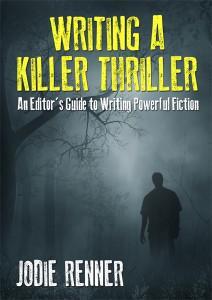Pacing for Power, Part I – Picking up the Pace
We’ve probably all read (or at least started) novels that just seem to drag in parts, where the author has spent too much time on static description, lengthy backstory, analysis and rumination, or other explanatory lead-ups instead of grabbing our attention and hooking us in with compelling characters faced with critical challenges, and lots of action and dialog. Most readers these days have little patience for an overly leisurely, analytical style, and it definitely doesn’t work for suspense-thrillers and most other best-selling fiction.
On the other hand, I’ve seen movies where it’s nonstop car chases, with buildings, cars, and people being blown up left and right. Too much of that gets old fast, making us just feel exhausted or just numb.
Readers’ tolerance or desire for either a leisurely pace or lots of action depends on the genre, of course. A literary fiction will usually have slower pacing than an action-thriller, for example. But in any successful novel, the key is to vary the pacing, and of course in “page-turning” suspense fiction, the pace should be generally brisk, with lots of conflict and tension. But even if you’re writing a fast-paced thriller or action-adventure, you don’t want to write your whole book at a break-neck pace, as that can be exhausting for the reader. Give them a chance to catch their breath from time to time before the next onslaught.
Successful writers use a variety of techniques to either slow down or speed up a story. Here in Part I, we’ll start with some tips for picking up the pace for faster, more exciting action scenes.
You can first find ways to increase the pacing of your story on a macro level, by considering scenes and chapters—do you have passages where not much is happening? Any slow-moving, boring scenes should be condensed, rewritten, or even deleted. Next, analyze the pacing at a micro level and tighten up your paragraphs and sentences, eliminating repetitions and reducing convoluted phrasing and excess wordiness. And while you’re at it, replace abstract, vague or obtuse words with more concrete, powerful, sensory, to-the-point words.
Some Tips for Picking up the Pace in Your Story:
* Keep chapters and scenes short, and change scenes rapidly.
* Show compelling action scenes in real time, and skip over slower transition scenes. If you’re writing a fast-paced thriller or action-adventure, summarize, reduce or omit the “reaction/reflection/regrouping” type sequels so integral to romances. Also summarize to condense long passages of time where not much happens.
*Start each scene or chapter as late as possible, not with a lengthy warm-up. Your story and every scene and chapter should start with some kind of question, conflict or intrigue, to arouse the curiosity of the reader and make them want to keep reading.
* End each scene or chapter as early as possible, rather than spending a lot of time wrapping up. And it’s best to end most scenes and chapters with a “cliff-hanger”—some kind of twist, revelation, story question, intrigue, challenge, setback or threat to make the reader want to turn the page and start the next chapter.
* Action scenes need to be “shown” in real time, to make them more immediate and compelling, rather than “telling” about them after the fact. (See my article “Show, Don’t Tell.”)
* Limit descriptive passages, backstory, and analyses.
* Use short, powerful sentences, with strong verbs, to-the-point dialogue, and lots of internal and external reactions.
* Keep transitions short from one scene to another. Use a sentence or two to take the reader from one telling scene to the next. Or just cut directly to the next scene.
* Add tension, conflict, intrigue, and change to every scene. This will keep the readers turning the pages to find out what happens next. See my article, “Every Scene Needs Conflict and a Change.”
* Use rapid-fire dialogue, with short questions, abrupt answers, lots of tension, and little or no description, deliberation or reflection.
* Use concrete words, strong nouns and powerful verbs, and shorter sentences and paragraphs. Write tight—take out all unnecessary, repetitive words and phrases.
* Use active voice to add urgency: “The detectives questioned the suspects,” rather than “The suspects were questioned by the detectives.” Or “The tornado damaged buildings,” rather than “Buildings were damaged by the tornado.”
Writers and readers—do you have any suggestions to add for picking up the pace in fiction?
In Part II, we’ll discuss techniques for using a slow-motion, heightened style of pacing to increase tension and intrigue.
Copyright © Jodie Renner, www.JodieRennerEditing.com, August 2012
Jodie Renner is a freelance editor specializing in thrillers and other crime fiction. Her craft-of-fiction articles appear here and on five other blogs. For more information on Jodie’s editing services, please visit her website or blog.

Jodie’s popular 42-page e-booklet, Writing a Killer Thriller – An Editor’s Guide to Writing Powerful Fiction, is only $0.99 on Amazon or PDF.
